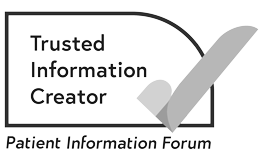Targeted radionuclide therapy for neuroendocrine tumours (NETs)
What is targeted radionuclide therapy?
This therapy uses a radioactive substance called a radionuclide. It is injected into the bloodstream. Cancer cells absorb radionuclide more than normal cells. This means they receive a higher dose of radioactivity. This eventually destroys the cancer cells.
Targeted radionuclide therapy and NETs
You may have targeted radionuclide therapy to relieve symptoms of carcinoid syndrome and control the growth of neuroendocrine tumours (NETs).
You usually have treatment 4 times, with a break of 8 to 12 weeks between each treatment.
To control the growth of NETs, the radionuclide can be combined with a substance called octreotide. The NET cells absorb the drug along with the radioactive substance. When the treatment uses octreotide, it is sometimes called peptide receptor radionuclide therapy (PRRT) or lutetium therapy.
Targeted radionuclide therapy only works for NETs that absorb large amounts of octreotide. Before treatment, you will have a nuclear medicine scan. The scan will measure how much octreotide the tumour absorbs.
If you are already having treatment with octreotide or lanreotide injections, your doctor may stop them for a while before radionuclide therapy.
After targeted radionuclide therapy
After the radionuclide treatment, you will need to be in a room by yourself for 1 or 2 days. Your nurse will talk to you about keeping your distance and only spending short periods of time with certain people for a few days or weeks after treatment. This is so the radiation cannot affect others, especially children and pregnant people.
Possible side effects of targeted radionuclide therapy
All the side effects of targeted radionuclide therapy will be discussed with you before you agree (consent) to have treatment. For most people, the side effects do not last long, and they recover quickly.
Some people get a stomach ache or feel sick because of the treatment. You may have some pain for a few days due to inflammation of the tumour. Medicines can help with these side effects.
There may be a temporary drop in some of your blood cell levels. If this happens, you may:
- feel tired
- be more at risk of infection
- bruise or bleed more easily.
Doctors will monitor you closely and you will have regular blood tests.
In the first few hours after treatment there can be a release of hormones. This can make your carcinoid symptoms worse for a couple of days.
About our information
-
References
Below is a sample of the sources used in our neuroendocrine tumours (NETs) information. If you would like more information about the sources we use, please contact us at cancerinformationteam@macmillan.org.uk
Esmo clinical practice guidelines: endocrine and neuroendocrine cancers. Available from: www.esmo.org/guidelines/endocrine-and-neuroendocrine-cancers (accessed May 2021). -
Reviewers
This information has been written, revised and edited by Macmillan Cancer Support’s Cancer Information Development team. It has been reviewed by expert medical and health professionals and people living with cancer. It has been approved by Senior Medical Editor, Dr Paul Ross, Consultant Medical Oncologist.
Our cancer information has been awarded the PIF TICK. Created by the Patient Information Forum, this quality mark shows we meet PIF’s 10 criteria for trustworthy health information
-
Reviewers
This information has been written, revised and edited by Macmillan Cancer Support’s Cancer Information Development team. It has been reviewed by expert medical and health professionals and people living with cancer. It has been approved by Chief Medical Editor, Professor Tim Iveson, Consultant Medical Oncologist.
Our cancer information has been awarded the PIF TICK. Created by the Patient Information Forum, this quality mark shows we meet PIF’s 10 criteria for trustworthy health information.
Date reviewed
This content is currently being reviewed. New information will be coming soon.

Our cancer information meets the PIF TICK quality mark.
This means it is easy to use, up-to-date and based on the latest evidence. Learn more about how we produce our information.



